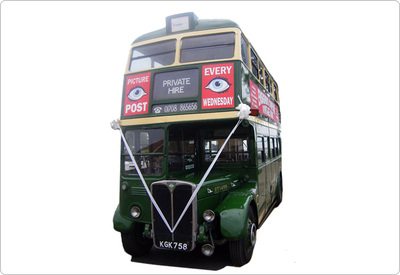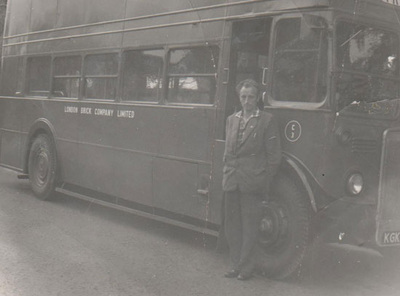Recent Photos
|
RT1499
Seating Capacity:
56 (30 upstairs and 26 downstairs) Special features: Ideal for film work and weddings. PA system which makes this bus ideal for tours of London. Description:
Another of London’s famous RT class, that was the worlds largest standardised bus fleet totaling nearly 7,000. RT1499 is one of only two survivors whose body was built by Cravens in Sheffield in 1949 both are now in the Ensignbus fleet. Sometimes forgotten now is that London Transport used to operate red buses in the Central Area and Green out in the suburbs, or the Country Area as it was known. RT1499 spent the last of its days with LT as a ‘green’ bus, the livery to which it has been returned to, making it ideal for more rural locations or where a red bus is just ‘not quite right’. Always popular by being slightly different the green RT is a link to London’s rural past. Vehicle History
RT Class History:
The RT is surely one of the best know types of London bus with a look that is timeless as well as being a design classic. RT’s have featured in films, such as ‘Summer Holiday’ or James Bonds ‘Live and Let Die’ all adding to the familiarity of the type.The first RT took to the road in service weeks before the start of World War II and hence became the only true Pre War RT, however with the other 149 of this batch entering service throughout the next two years before hostilities ceased, these first 150 are universally all known as the Pre War batch.Following the end of the war it had been decided that the RT would form the majority of London double deck fleet and some modifications were made to the post war design to improve on what had been learnt from the operation of the pre war batch, thus started one of the great fleet replacements of war weary types as quickly as possible. By 1948 RT’s were entering service in a steady stream, there were however numerous delays and shortages caused by the lack of parts and skilled workers so soon after the end of hostilities. Body production was quicker than chassis leading to some new RT bodies being mounted onto STL chassis, thus making the short lived SRT class, (of which our very own RT4421 is one, formerly SRT 119). To also help production non standard body builders were used in addition to Park Royal and Weymann, Saunders and Cravens also built a few hundred examples see our RT1431 and RT1499 for Cravens examples.By 1955 bus use had dramatically declined and LT had more buses than it was ever going to need, so the first non standard types, the Cravens, were withdrawn and sold on. Further withdrawals continued as the new Routemasters started to appear in the late 1950’s.However the RT was a survivor and following its hey day, where nearly 7,000 were in service, they took a very long time to replace. The last one (RT624 also now in our fleet) ran on the East London route 62 in April 1979 bringing to an end 40 years of continuous operation of this type, a record many thought would never be beaten. However, its successor the RM did manage to achieve this extraordinary feat lasting in service until 2005.It’s true to say that when people are asked to draw or describe a London bus it is generally one of these two types people will think off, such is the iconic regard they achieved however with the RT having been built in such austere times and having operated through such harsh conditions its longevity is a real credit to its type. RT1499 History RT1499 was new in November 1949 being delivered to Gillingham Street Garage in Victoria. It spent some time at Mortlake Garage before being transferred into the ‘green’ country area of operations at Watford. Disposed of after only eight years in the capital it went via the dealer Birds of Stratford-upon-Avon to the London Brick Company, in Bedfordshire where it operated as a staff bus until 1971. The significance of the rare Cravens bodied vehicle was realised and the vehicle was purchased for preservation and in 1978 it was hired back to London Transport for use as a driver trainer, such was the shortage of vehicles. Returning to private ownership it was acquired by Ensignbus in January 2005 and following a significant reframing and restoration it was returned to the road in late 2006 wearing the green and cream livery worn by some of this batch when new. Technical Specifications: Date of first registration: 8 November 1949 Chassis: AEC Regent III Chassis number: 09612892 Engine: AEC 9.6l Fuel: Diesel Body Number 2778: Body: Cravens 3RT3/4 Seating: 56 seats, 26 downstairs & 30 upstairs |



















